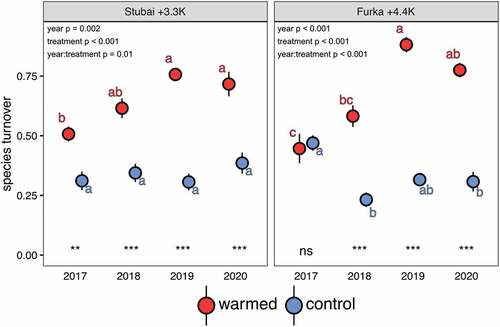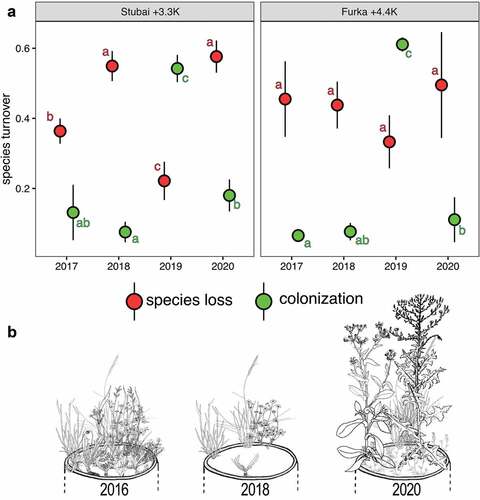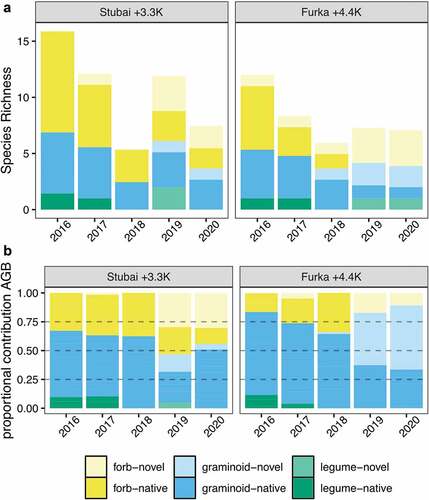Figures & data
Table 1. Geographic and climatic characteristics of study sites from low to high elevation.
Figure 1. Species turnover of mountain plant communities originating from Stubai (Austria) and Furka (Switzerland) across years in two warming and drought treatments. Warming and drought caused a significant increase in species turnover in plant communities compared to climatic control sites. Species turnover increased over time in warmed communities compared to their climatic control, where species turnover remained low. Shown are mean and standard error of turnover rates. Asterisks indicate differences between warming and control per year; letters indicate differences across years per treatment and site of origin (n = 9; p < .05 for both notations).

Figure 2. (a) Yearly rates of species loss and gain in two warmed mountain plant communities. Warming combined with drought led to destabilized communities gradually losing native species, creating a window of opportunity for the colonization of novel species after the severe drought in 2018. For in situ control communities, see Figure S1. Shown are mean local rates of species loss and gain (n = 9) and standard errors (p < .05). Letters indicate differences across years per treatment. (b) Schematic of turnover of species composition at three time steps under warmed conditions: initially and after two and four years of climatic exposure. Here, the typically dense and low-statured mountain plant community from Furka (Switzerland) was disrupted by interacting stressors in 2018, creating windows of opportunity for novel species to colonize. Note that only one native species (Nardus stricta) was able to persist over a four-year warming period, and tall-statured, highly competitive novel species started to dominate the translocated communities from 2019 on, in both proportions of aboveground biomass (AGB) species richness. Sketches adapted from Jäger and Rothmaler (Citation2017).

Figure 3. (a) Mean species richness of warmed mountain plant communities split by plant functional groups (PFG) and resident status. In both warming treatments the presence of native species is declining with time and novel species began dominating plant communities after the 2018 drought. (b) Proportional contribution of aboveground biomass (AGB) split by PFG and resident status in warmed plant communities. Relative contributions of PFGs to community productivity remain stable across years even though proportions of native and invading species have changed significantly (see also Figure S2).

